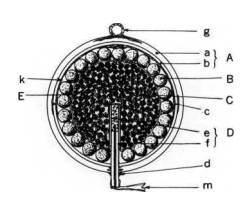Maybe the most of people that is more familiar with Pyrotechnics already knows how fireworks rising tails are made, but there are others that for sure don't, so, in this short post, that's what I'm going to write about.
Basically, the rising tail is like a comet, not only in the effect ( what we see in the air ) but also in the way it is made.
This is what it looks like when rising to the sky:

Rising tails are used both in shells, mostly in the round ones, but also in some rare rockets ( usually they are not so used in rockets because the rockets already have a "tail" like effect when liffting off ). Actually, most of the small cake shells ( bombettes ) also have a tail effect.
For normal sized shells and rockets, the tails are a pressed composition in a small kraft paper casing with a fire-facing side covered with a prime composition for better ignition and are glued to the top of the shell. In cake cylindrical bombettes, the tails are inside the shell itself and located at the bottom.
In the most of shells, the rising tail component is triggered during the lift charge explosion, but in rockets, the tail is igneted by a quickmatch that triggers both the rocket motor and the tail at the same time.
One important thing about the construction of rising tails is that they must have the same burning time of the time fuse, so, the composition type / quantity and burning rate are important factors. It is very common to see some tails having shorter burning times than time fuses ( sometimes you can see the fuse burning it the air for some milliseconds after the tail has burned completely ).
In the following image we can see the tail in one of my first made shells:

A curiosity: in some cases, rising tails are refered by the word "trunk" in some fireworks labels as, depending on the shell effect, like a "Palm Tree" they can really "simulate" the trunk of the tree.
There are other interesting types of "rising effects" used in fireworks that are widely used for example in Japanese shells, but let's talk about them in another post.

Comments